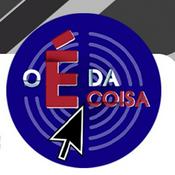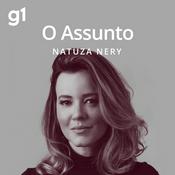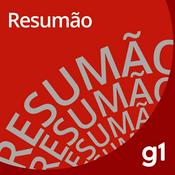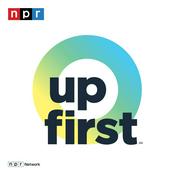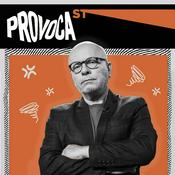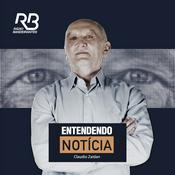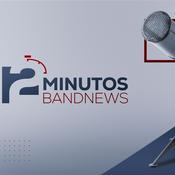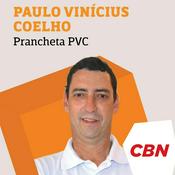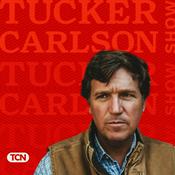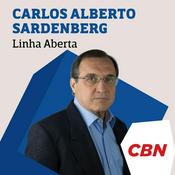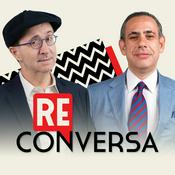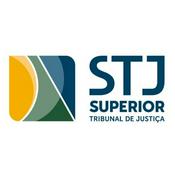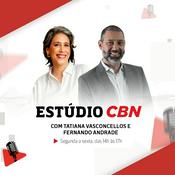98 episódios

How to Build in a Market That Won’t Let You In
01/12/2025 | 53min
In most industries, if you’ve got a solid idea, a few engineers, and a working prototype, you can at least get in the game. Professional sports is not one of those industries. When Jordy Leiser co-founded Jump with Alex Rodriguez and Marc Lore, he wasn’t just building software — he was trying to rebuild the entire fan experience from the ground up, in a business dominated by legacy players like Ticketmaster. Four years later, his company is powering the digital backbone for teams like the Minnesota Timberwolves and North Carolina Courage. In this episode, Jordy explains what it actually takes to break into a closed industry, why he reverse-engineers every funding round before he raises it, and the biggest mistake he refused to repeat as a second-time founder. RUNTIME 53:07 EPISODE BREAKDOWN (1:12) Breaking into pro sports, rebuilding fan experience, and reverse-engineering fundraising. (2:03) How Stella Connect (customer service) laid the foundation for Jump (customer experience for fans). (2:58) What Jump does today: a unified fan experience + data platform for teams. (4:11) The unusual founding plan: 3-4 years of R&D, designed to launch with an NBA franchise from day one. (5:46) Why sports is nothing like building a typical SaaS startup — more like a “car company” level of complexity. (6:48)The true barrier: a near-monopoly in ticketing that stops innovation cold. (7:59) Selling into a market where fans have low expectations — and why demand is obvious but still untapped. (9:54) Early customers as classic early adopters — every team already knows the pain points intimately. (11:25) The first hypothesis they had to kill: incumbents don’t want to integrate or share data. At all. (12:32) Designing for the actual fan demographic: season ticket holders skew 50+, so “cutting-edge UX” isn’t always the answer. (13:25) Jordy’s advice to founders: get out of the building, talk to insiders, but keep your “child’s mind.” (15:06) Sports as an industry you can’t “hack into” — it works more like fashion or Hollywood. (17:31) Moments when he realized he was losing stakeholders — and why being “comfortable in the uncomfortable” is essential. (18:03) Early would-be partners who backed out, the impact on morale, and what they learned from those rejections. (19:45) Jump’s origin as a “dynamic seating” idea — and why they had to build the entire platform instead. (21:03) The “invisible platform” ethos: why Jump melts into the background so teams can own the fan relationship. (23:10) Why NWSL teams and NBA franchises have surprisingly similar needs — and what that taught them about productizing. (24:36) Jordy’s litmus test for platform vs. point solution: how many people in the org depend on you to do their job? (27:01) Seed to Series A timeline — and how the Timberwolves sale collapsing delayed everything by a year. (28:37HaHow Jordy processed a crisis that was public, sudden, and existential. (31:13) The Long Beach pier walk: the moment he decided to pivot the GTM to a crawl-walk-run strategy. (32:49) Effectuation theory, the “bird in hand,” and how it led to NCAA → NWSL → Timberwolves as a survival sequence. (34:39) What he had to unlearn from Stella Connect: stop zooming in — zoom way out to a 10–20-year vision. (37:05) The habit he kept: talent above all else — and why his first call was to a Chief People Officer. (38:45) Minimum viable people function for early founders: fractional HR > junior recruiter. (42:58) High performance without grind culture: intensity ≠ toxicity — and why durability matters more than speed. (45:40) Hiring from big tech: what’s actually transferable, and the dangers of logo-blindness. (50:55) The one answer Jordy would need from a founder-CEO before he’d join their startup. LINKS Jordy Leiser Jump Alex Rodriguez Marc Lore Jump Series A announcement Delivering Happiness: A Path to Profits, Passion, and Purpose, Tony Shieh Effectuation — UVA Darden School of Business SUBSCRIBE 📥 Get the Fund/Build/Scale newsletter on Beehiiv: https://fundbuildscale.beehiiv.com/ 📸 Follow Fund/Build/Scale on Instagram: https://www.instagram.com/fundbuildscale/ 📺 Watch Fund/Build/Scale on YouTube: https://www.youtube.com/channel/UCFFH4cs2B1BKatPGs8SFRJw Thanks for listening! – Walter

How to Prove You’re Building a Venture-Scale Company
23/11/2025 | 1h
Most founders think VCs want a pitch deck full of market numbers, a roadmap, and a feel-good story about the future. Hoxton Ventures Partner Payton Dobbs isn’t looking for any of that. He wants to know if you actually understand the game you’re trying to play. In this conversation, Payton breaks down the tactical stuff founders almost always get wrong: why TAM slides don’t matter how to define your real market what early signals prove you have a painkiller and not a vitamin and why most technical founders fail their first go-to-market quiz before the conversation even begins. He also talks about category creation, how to hire in the U.S. if you’re coming from Europe, why pricing is a strategic weapon, and the number-one question he asks every founder — the one that quietly decides whether you’re playing at venture scale or not. If you’re an early-stage builder, this episode will help you level up before you start meeting with VCs. RUNTIME 1:00:46 EPISODE BREAKDOWN 02:12: Payton Dobbs’ background and the value of building presence in key markets 03:25: Not all good ideas are venture scale: how to assess billion-dollar potential 04:01: Why new category creation is crucial for venture scale startups 06:35: What VCs look for in a pitch deck: TAM, SAM, and logic behind the numbers 08:06: Case study: Deliveroo and building new markets from small segments 09:07: Identifying pain points and leveraging founder expertise 10:57: Advice for technical founders: the value of complementary co-founders and commercial skills 12:23: Building frameworks: due diligence on markets, competitors, and learning from others’ mistakes 13:54: Adapting go-to-market strategies for different business models (B2B SaaS, consumer, etc.) 15:00: The importance of having a perspective and being able to debate your point of view 15:50: Solo founders vs. teams: most are teams, but solo founders can succeed too 13:28: The state of the AI ecosystem in Europe and why it’s accelerating 17:18: Navigating US immigration and talent: why keeping dev teams in Europe can be strategic 20:34: Common mistakes when entering the US: “If you build it, they will not come” 21:21: Do you need to reboot customer discovery in new markets? Sometimes, but not always 22:24: The importance of understanding the competitive landscape and customer needs in each market 24:54: Hiring in the US: cultural differences and what to look for in team members 27:33: Payton’s parting advice for founders expanding to the US: grind, network, and be relentless 28:36: Building sales ops from scratch: tools, systems, and process before people 32:05: Understanding and accruing value in the business value chain 34:45: Signals that a team can move from tech to traction: agility, speed, and adaptability 36:37: Pricing as an art and a science; lessons from Nest and Apple 40:00: Metrics: NPS, customer surveys, and forward-looking indicators 44:42: What Payton hopes to unlock for founders by being based in the US LINKS Payton Dobbs Hoxton Ventures White paper: Europe’s Sputnik Moment NVIDIA partnership: Accelerating the UK’s AI Startup Ecosystem SUBSCRIBE 📥 Get the Fund/Build/Scale newsletter on Beehiiv: https://fundbuildscale.beehiiv.com/ 📸 Follow Fund/Build/Scale on Instagram: https://www.instagram.com/fundbuildscale/ Thanks for listening! – Walter.

The "Marionette Threat" of Generative AI with All Tech is Human’s David Polgar
18/11/2025 | 19min
Today’s episode is something a little different. I’m doing a feed swap with Humans of AI, a podcast from the team at Writer. What you’re about to hear is their conversation with David Ryan Polgar, the Founder and President of All Tech Is Human, a leading organization in the Responsible Tech movement. He’s a pioneer in tech ethics and responsible innovation, and someone who’s been thinking about the societal impact of AI long before it was mainstream. If you’re building in AI, investing in it, or just trying to understand where this whole industry is headed, his perspective is a valuable counterweight to the hype cycles. ************ On this episode of Humans of AI, presented by Writer, we’re joined by David Polgar, founder of All Tech is Human, a non-profit and community dedicated to bringing together people, organizations, and ideas to grow and strengthen the Responsible Tech ecosystem. David shares some harrowing stories from the early days of social media that led him to where he is today – at the intersection of tech and human rights, AI and ethics. A lawyer and educator at the forefront of a movement “altering the DNA of tech development,” David is determined to create spaces and communities for human conversations and connections so that together we can shape the future of AI. Subscribe now so you don't miss an episode! Check out Writer’s Youtube channel to watch the full interviews. Learn more about Writer at writer.com. RUNTIME 19:50 LINKS David Ryan Polgar Humans of AI: Presented by Writer (podcast) Navigating the ethical implications of generative AI with All Tech Is Human’s David Polgar (Writer blog) Alaura Weaver Communicating Your Vision with May Habib (CEO, Writer) and Gaurav Misra (CEO, Captions) SUBSCRIBE 📥 Get the Fund/Build/Scale newsletter on Beehiiv: https://www.linkedin.com/newsletters/7249143254363856897/ 📸 Follow Fund/Build/Scale on Instagram: https://www.instagram.com/fundbuildscale/ Thanks for listening! – Walter.

Cyan Banister & Cristian Cibils Bernardes: Early Signals, Founder-Investor Fit, and Trustworthy Consumer AI
07/11/2025 | 47min
Recorded live in San Francisco during TechCrunch Disrupt 2025 week, this Fund/Build/Scale session brings together Cyan Banister (Long Journey Ventures) and Cristian Cibils Bernardes (Autograph) for a practical look at building consumer AI and the investor-founder dynamics that make it work. We dig into pre-traction signals that actually predict momentum, how to validate a weird idea, raise smart money, and ship products people return to. Cristian shares Autograph’s first moment of value, retention indicators, and a trust-by-design stance; Cyan unpacks the decision rules and behaviors that earn a second meeting. Together, they outline small-budget experiments and the frameworks they use to create products that stick. For first-time founders and early operators, this episode delivers concrete steps you can start taking tomorrow. Thanks very much to Jenna Birch and the team at SISU for co-hosting and making this live recording possible! EPISODE BREAKDOWN (1:54) Why Cristian named Autograph’s AI agent “Walter.” (3:37) When they connected, Cristian saw “a bunch of synchronicities along the way that just kept pointing in this direction.” (4:59) Cyan: “When he showed up and we were sitting together having coffee, I immediately was like, ‘yes.’” (6:03) The sheer number of coincidences linking these two is unsettling — “quantum entanglement” comes to mind. (8:18) Cristian and Cyan share their non-consensus takes on consumer AI. (10:53) Cyan describes the framework she’s using to assess early signals as an investor. (12:51) “I will not look at your résumé. I won’t look at what you did. Whatever you tell me in that interview is what I’m going to go off of.” (14:42) “Fundraising is grueling. It was 50 conversations before I met Cyan, and then I had, I think, another 30.” (16:53) Cyan’s framework for backing vs. passing. (18:26) The three essential ingredients Long Journey Ventures seeks in founders. (22:00) What a “magically weird” founder looks like — and why they’re so valuable. (26:15) A red flag that ensures you won’t get a second meeting with Cyan. (27:52) A behavior that virtually guarantees a second meeting. (29:45) Cristian describes Autograph’s moat. (34:40) “This whole thing doesn’t work if the trust element isn’t there.” (38:08) What founder-investor fit looks like in their working relationship. (41:57) One experiment founders should run this week. (43:10) The most underrated founder superpower. (44:10) “If you were interviewing for a job at an early-stage startup, what’s one question you’d have to ask the CEO before you could take the offer?” RUNTIME 47:19 LINKS Cristian Cibils Bernardes Cyan Banister Autograph Long Journey Ventures The Ugly Duckling SISU SUBSCRIBE 📥 Get the Fund/Build/Scale newsletter on LinkedIn: https://www.linkedin.com/newsletters/7249143254363856897/ 📸 Follow Fund/Build/Scale on Instagram: https://www.instagram.com/fundbuildscale/ Thanks for listening! – Walter. *********************************** This event and recording are independently produced by Fund/Build/Scale and co-hosted with SISU. We are not affiliated with, endorsed by, or sponsored by TechCrunch or TechCrunch Disrupt. “TechCrunch” and “Disrupt” are trademarks of their respective owners.

From Engineer to CEO: Ryan Wang on Building Assembled and Finding Product-Market Fit
27/10/2025 | 53min
I interviewed Ryan Wang, co-founder and CEO of Assembled, in his San Francisco office to unpack how he turned lessons from Stripe into a fast-growing startup that powers customer support teams at Robinhood, Canva, and Notion. We talk about: Finding the right co-founders and surviving a CEO hand-off Discovering product-market fit by asking one powerful question Turning a “sleepy” support category into a $200 billion opportunity Launching a second product with a startup-within-a-startup mindset What it takes to lead through AI disruption and build for adaptability Whether you’re building your first team or figuring out your second act, Ryan’s story is a masterclass in scaling deliberately while staying flexible. RUNTIME 53:40 _ EPISODE BREAKDOWN (2:35) “ I was employee number 80 or so at Stripe, working on machine learning for fraud detection.” (5:08) If you’re doing diligent customer discovery, working harder does not get you ahead faster. (7:27) How Assembled’s founding team, er, assembled. (8:47) “ There was a period, maybe the first year and a half or so, where there was no CEO.” (10:33) Ryan explains the mindset that took him from software engineer to CEO. (12:30) “ ‘Brother mode’ is both a feature and a bug at the same time.” (14:58) How Assembled arrived at workforce management as its unique value proposition. (17:48) Ryan talked to more than 100 prospects during the customer discovery process. (19:00) The exercise they used to develop their initial customer personas. (22:24) “ We took a really, really long time to hire for product. It was probably four or five years into the company.” (25:00) Who was Assembled’s first design hire? (27:26) To acquire product-market fit, “ we started with just a simple automation value proposition.” (30:26) “ A lot of folks wanted to invest in Stripe alums, and Stripe led our seed.” (33:35) Why customer support ops is — and will continue to be — such a huge opportunity. (36:41) A good mission statement defines the change you want to see in the world. (41:41) “ People who really do feel committed to a large mission, they understand that to get there is gonna require a lot of schlep.” (43:55) How Assembled used a startup-within-a-startup mindset to innovate. (48:47) “ We reassigned folks internally, and the key really was the order of operations.” (51:31) If you were interviewing for a job with an early-stage startup, what’s one question the CEO would have to answer before you could take the offer? LINKS Assembled Ryan Wang Brian Sze John Wang Stripe Kelly Sims, Thrive Capital Jack Altman, Alt Capital Jen Ong Vaughan, Head of Strategic Ops, Stripe SUBSCRIBE 📥 Get the Fund/Build/Scale newsletter on LinkedIn: https://www.linkedin.com/newsletters/7249143254363856897/ 📸 Follow Fund/Build/Scale on Instagram: https://www.instagram.com/fundbuildscale/ Thanks for listening! – Walter.
Mais podcasts de Notícias
Podcasts em tendência em Notícias
Sobre Fund/Build/Scale
Ouça Fund/Build/Scale, Foro de Teresina e muitos outros podcasts de todo o mundo com o aplicativo o radio.net

Obtenha o aplicativo gratuito radio.net
- Guardar rádios e podcasts favoritos
- Transmissão via Wi-Fi ou Bluetooth
- Carplay & Android Audo compatìvel
- E ainda mais funções
Obtenha o aplicativo gratuito radio.net
- Guardar rádios e podcasts favoritos
- Transmissão via Wi-Fi ou Bluetooth
- Carplay & Android Audo compatìvel
- E ainda mais funções


Fund/Build/Scale
baixe o aplicativo,
ouça.



